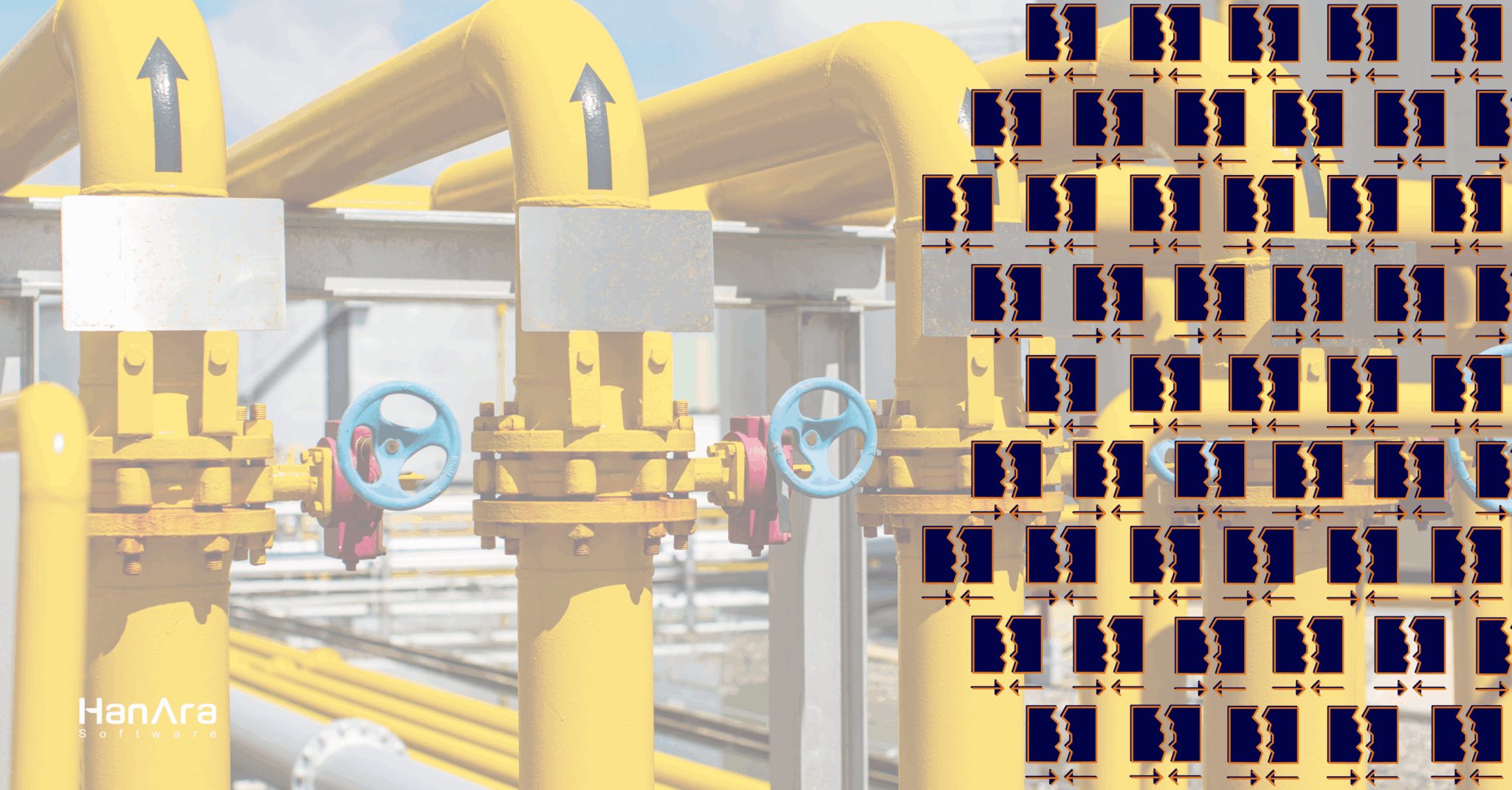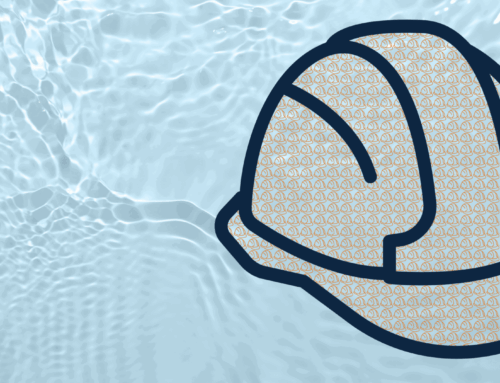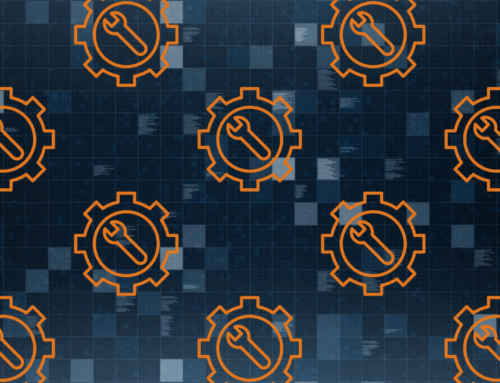A dead car battery on vacation day is annoying. A flat tire two hours into the drive is frustrating. But when that flat tire happened because a failing wheel bearing you replaced yesterday put extra stress on the tire, now you’re dealing with something more dangerous: a failure cascade.
While these cascading failures can ruin a family camping trip, they can also shut down entire industrial operations, result in significant downtime costs, and even pose a threat to worker safety. In industrial settings, what starts as a minor equipment issue can quickly spiral into a catastrophic chain reaction if the warning signs are not caught early.
What is a Failure Cascade?
A failure cascade occurs when one equipment failure creates conditions that cause additional failures throughout a system. Unlike isolated breakdowns, these interconnected failures feed off each other, creating a domino effect that can be far more costly and dangerous than the sum of individual equipment problems.
A Failure Cascade in Action
Let’s return to that camping trip to see how cascading failures work:
You’re preparing for your family’s annual camping trip to a national park, a significant upgrade from last year’s local campsite. Your trailer has served you well for many years, thanks to regular maintenance, and you’ve given it a thorough once-over. Because it’s better to be safe than sorry on a long trip, right?
The morning of departure, your car battery is completely dead. No big deal; batteries don’t last forever. It failed earlier than expected, but it was still within the expected lifespan of the battery. After a two-hour delay and a trip to the auto parts store, you’re on the road with everyone’s excitement renewed.
A few hours later, you hear an unusual noise and pull over to discover the trailer wheel bearing you just replaced has failed catastrophically. Stranded in rural Texas, you find a local mechanic who can do the repair, but it’s late enough that you decide to stay overnight and start fresh tomorrow.
Back on the road the next morning, spirits are high again until BOOM! One of the trailer tires blows out spectacularly. The failed bearing had been creating irregular forces that stressed the trailer tire beyond its limits. This wasn’t bad luck striking for a third time. Instead, it was an example of a failure cascade. And your family decides it’s time to cancel the trip.
So how does that relate to industrial operations? Sometimes, you experience bad luck, such as with your battery, and sometimes you encounter failure cascades, as with the bearing and tire. But with better condition monitoring, you can reduce both.
Breaking the Cascade: Predicting vs. Preventing
Many organizations rely on preventive maintenance, replacing parts on a fixed schedule before they’re expected to fail. It’s a significant improvement over reactive maintenance (fixing things only after they break), but it comes with inherent trade-offs.
Schedule-based maintenance can mean replacing components that still have useful life remaining, which increases unnecessary costs. Alternatively, the schedule might not account for components that are degrading faster than expected due to unusual operating conditions, leaving you vulnerable to unexpected failures. While preventive maintenance reduces some risk, it doesn’t eliminate the guesswork.
The challenge is that neither approach (reactive or preventive) gives you real visibility into what’s actually happening with your equipment. You’re either constantly responding to breakdowns or following a predetermined schedule that may not reflect reality. Both scenarios can lead to unplanned downtime, operational inconsistency, and higher maintenance budgets.
The Predictive Advantage
This is where predictive maintenance changes the equation.
Predictive maintenance (PdM) uses continuous condition monitoring and advanced analytics to assess equipment health in real time. Instead of relying on a calendar or waiting for a breakdown, predictive tools track subtle changes in equipment behavior (vibration patterns, temperature fluctuations, or other key indicators) and alert you when something is abnormal.
Think back to that camping trip: imagine if your trailer had sensors that detected the bearing starting to degrade before it failed catastrophically, and before it damaged the tire. You could have made a controlled stop at a scheduled service center instead of being stranded roadside in rural Texas.
The fundamental difference is:
- Preventive maintenance asks: “When was the last time we replaced this part?”
- Predictive maintenance asks: “What is this asset telling us about its health right now?”
That shift from time-based schedules to condition-based decisions means fewer surprises, more consistent performance, and maintenance resources deployed where they’ll have the most significant impact. Most importantly, it helps you identify and address that initial failure before it triggers a cascade of further failures. Think of it as not just planning ahead but staying ahead.
For more information on the differences between these maintenance strategies and the specific advantages of predictive approaches in greater detail, check out our blog post: Predict and Prevent.
Predict & Prevent Failures with HanAra
A failure cascade doesn’t announce itself; it starts with subtle signs that are easy to miss until it’s too late. At HanAra, we help organizations identify and address those early warnings before they spiral into costly shutdowns.
Our predictive analytics software continuously monitors equipment health, translating complex sensor data into clear, actionable insights. You’ll know when a component has a degrading health, not when it’s convenient for your maintenance schedule, but when the equipment itself tells you it needs attention.
The result? You can:
- Detect degradation early: Catch problems while they’re still small and manageable
- Prioritize intelligently: Focus maintenance resources where they are needed most
- Prevent cascades: Stop that first failure before it triggers a chain reaction
- Reduce unplanned downtime: Replace reactive firefighting with proactive planning
- Optimize your budget: Spend maintenance dollars based on actual equipment condition
Ready to Break the Cascade?
Don’t let a minor equipment issue snowball into a plant shutdown. Contact us today to learn how HanAra customers are predicting and preventing failures before they cascade, protecting production schedules, reducing costs, and building the kind of reliability that drives sustainable growth.
Let’s make sure your operations never get stranded in the middle of nowhere, Texas.






